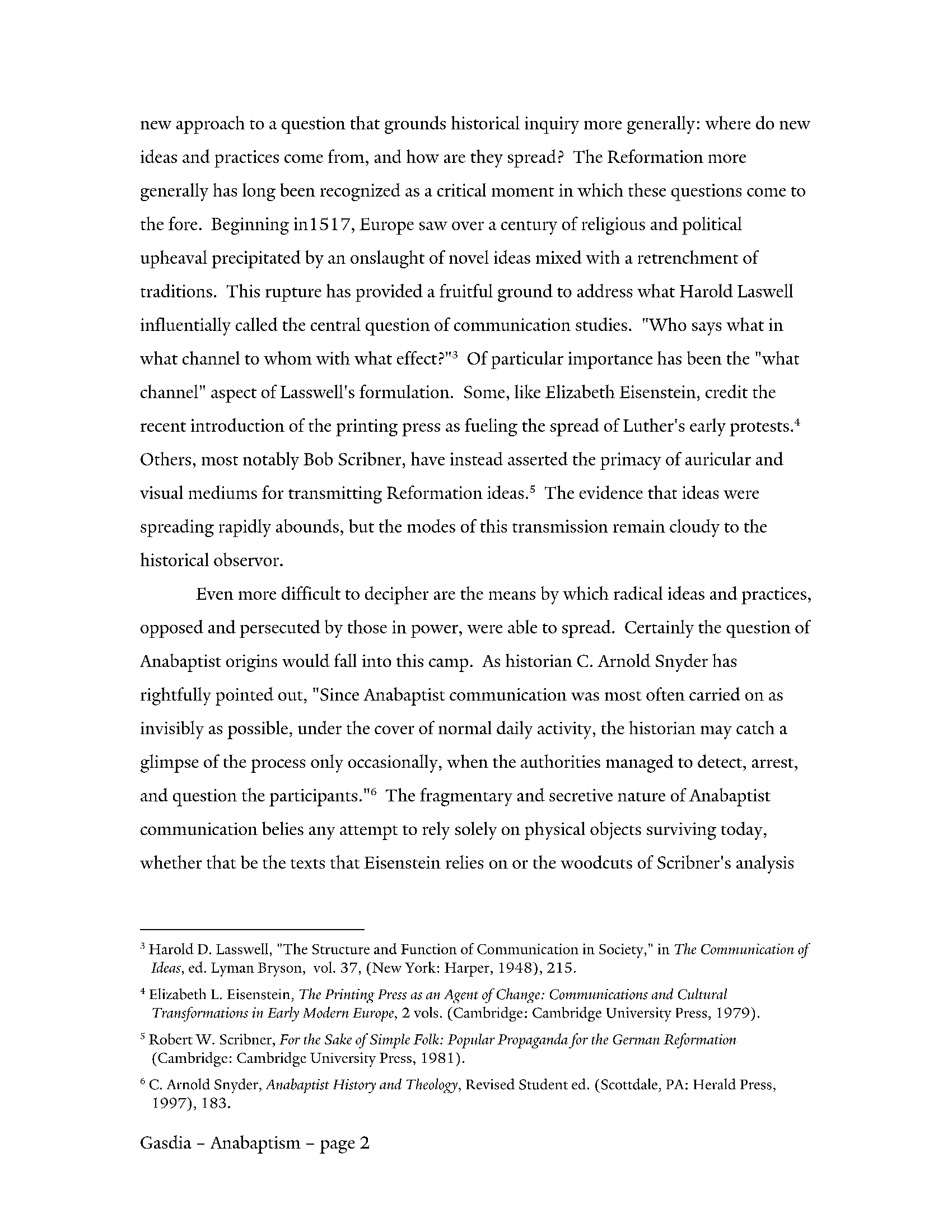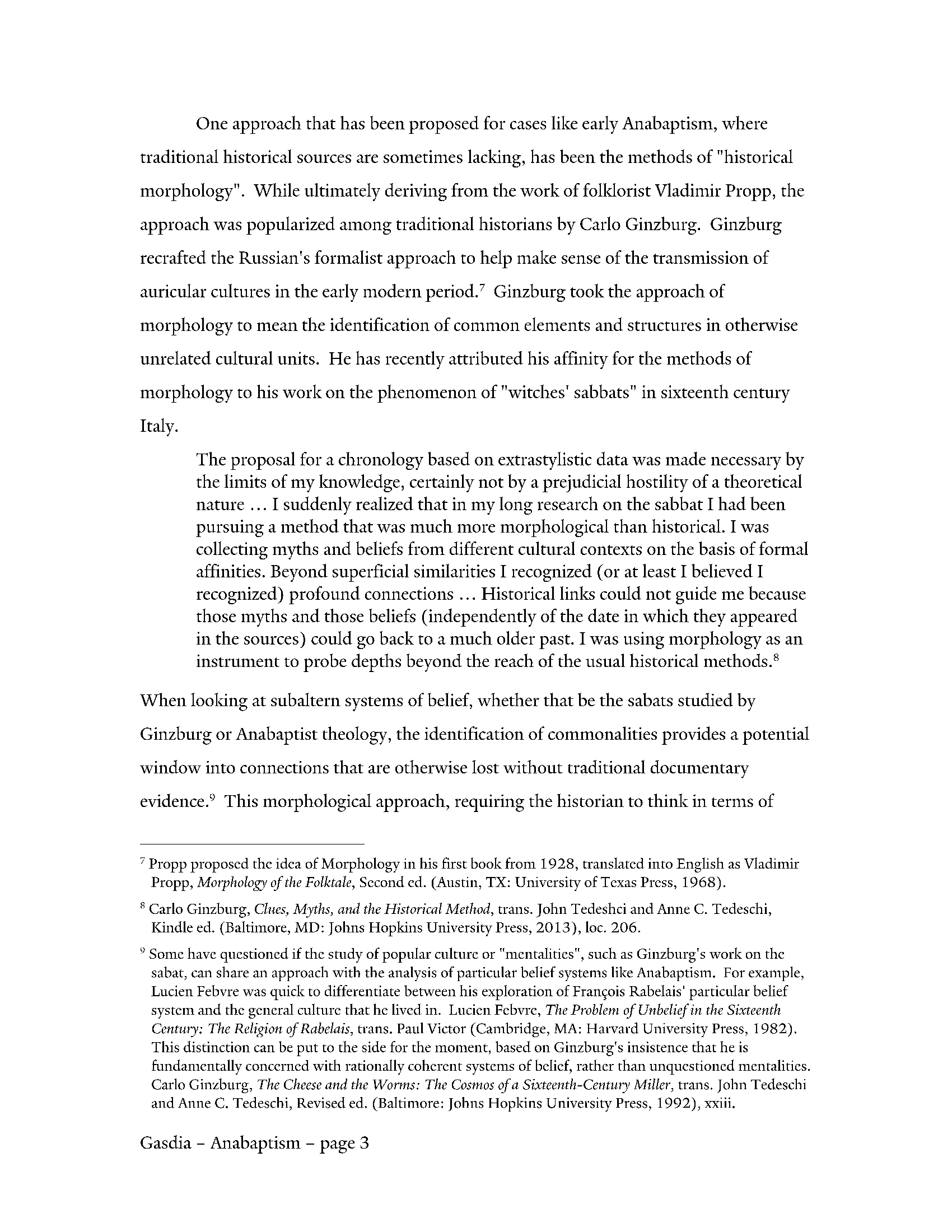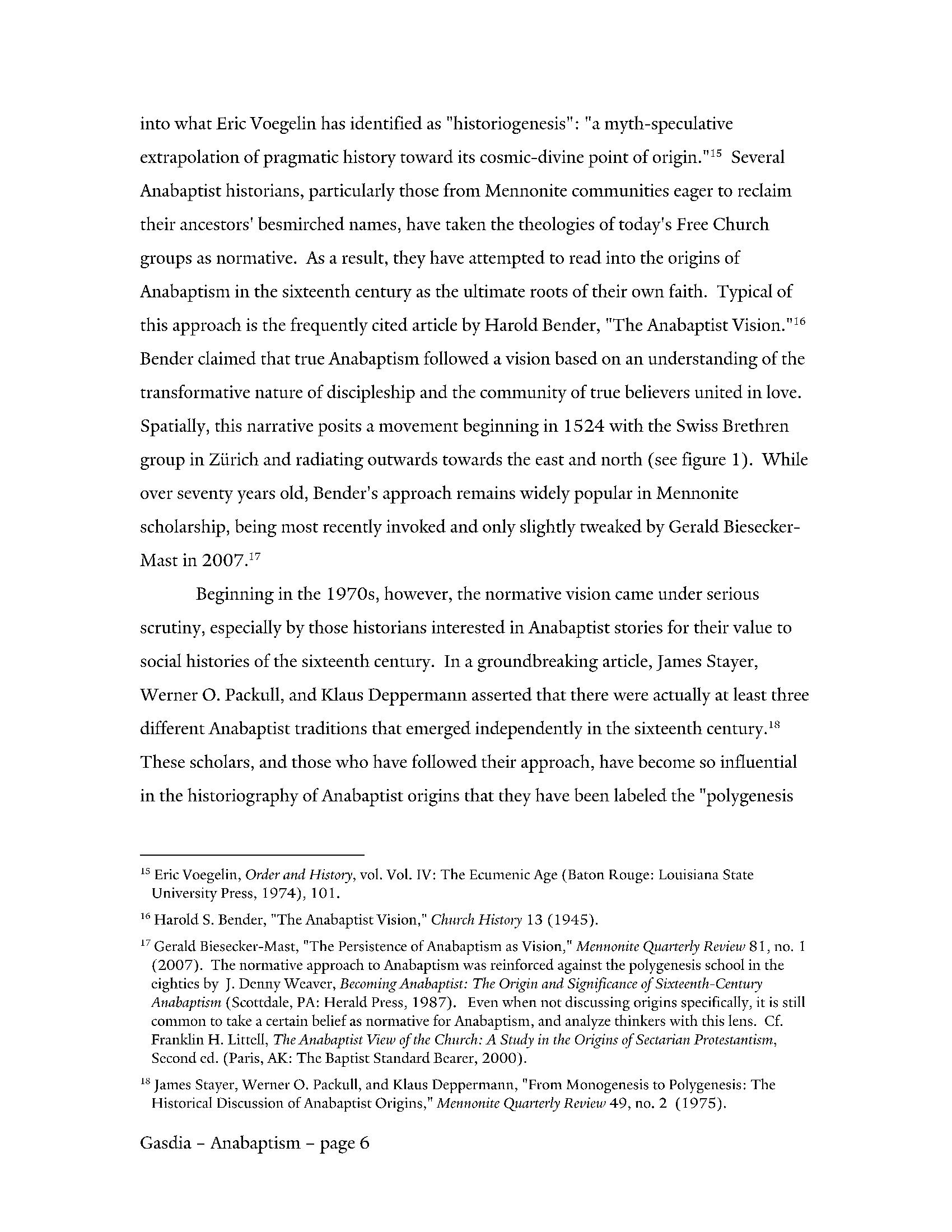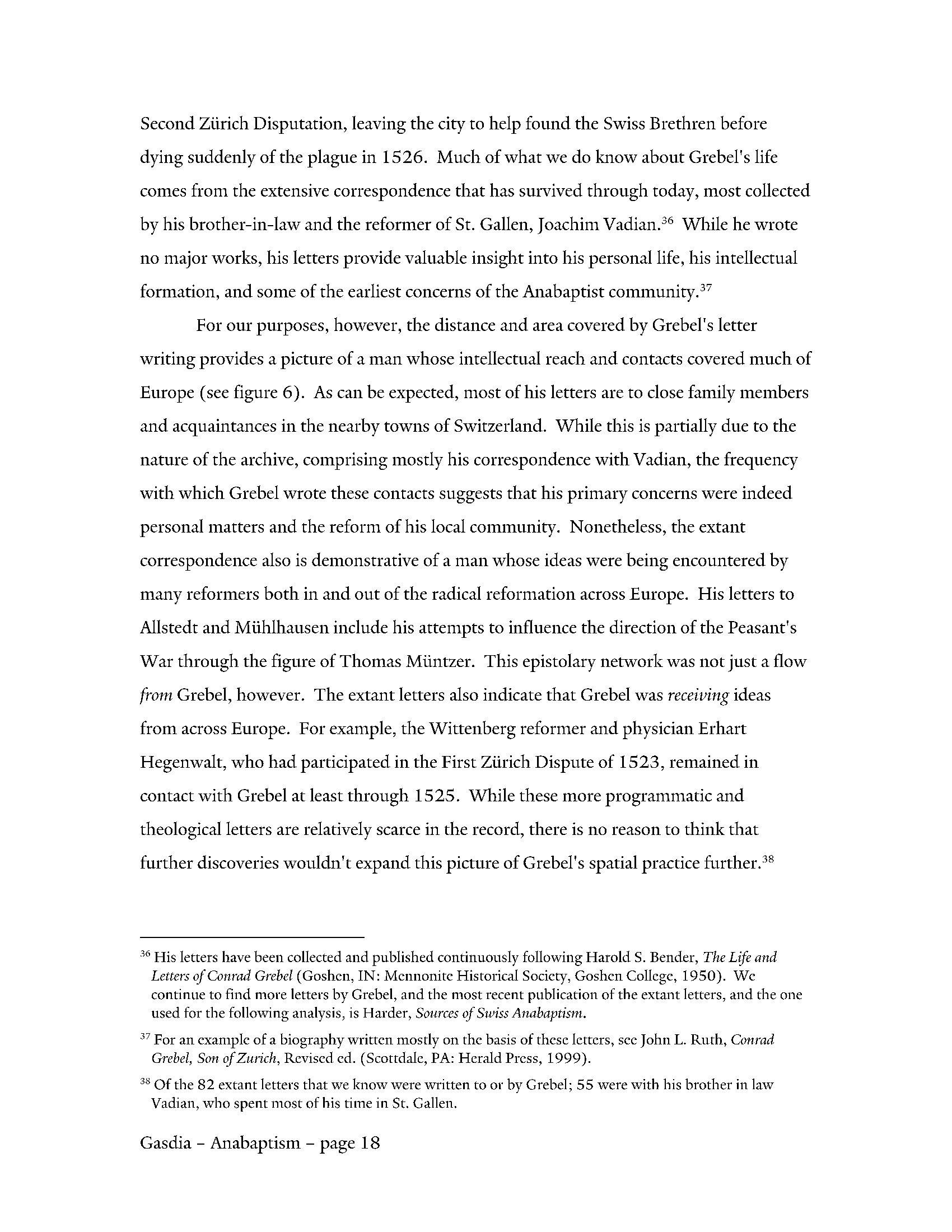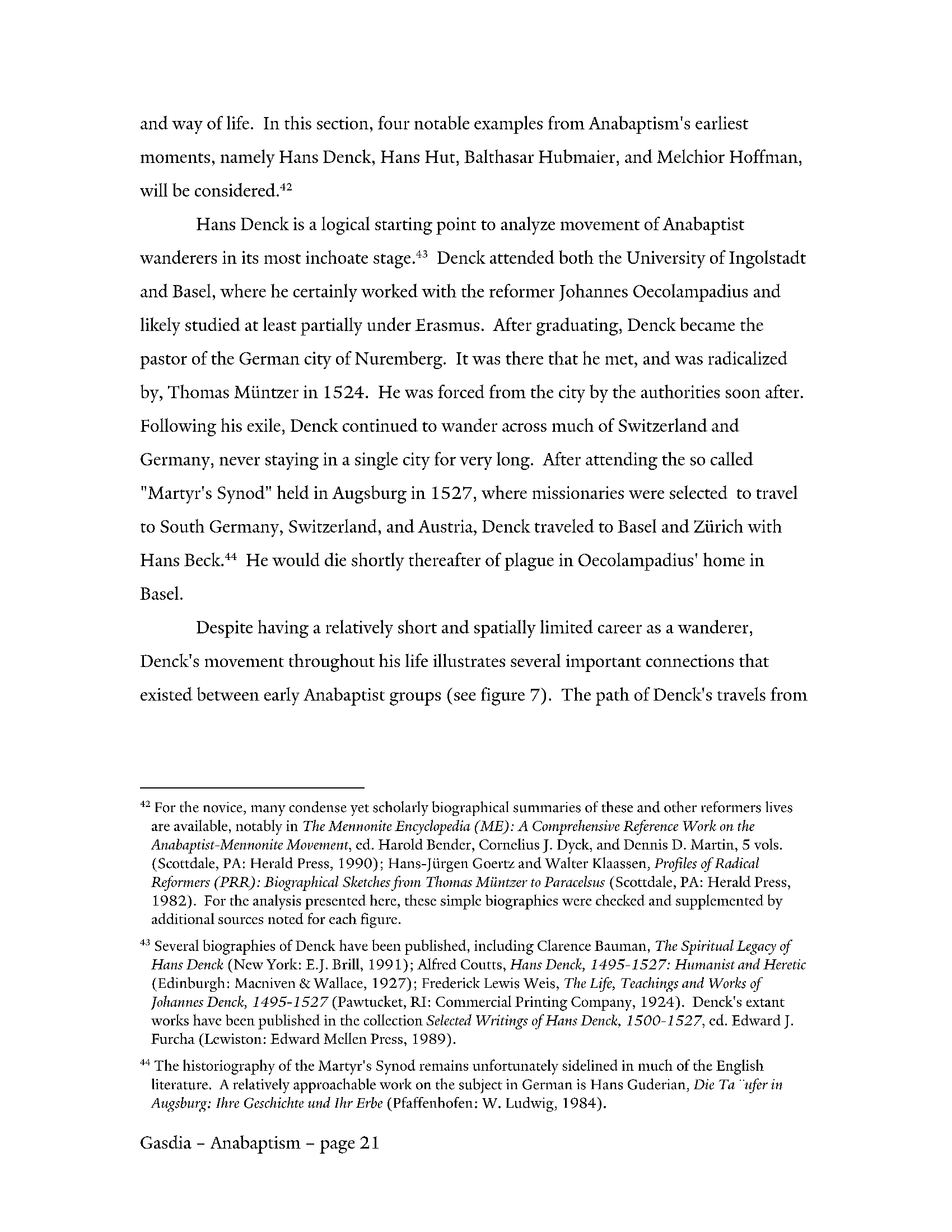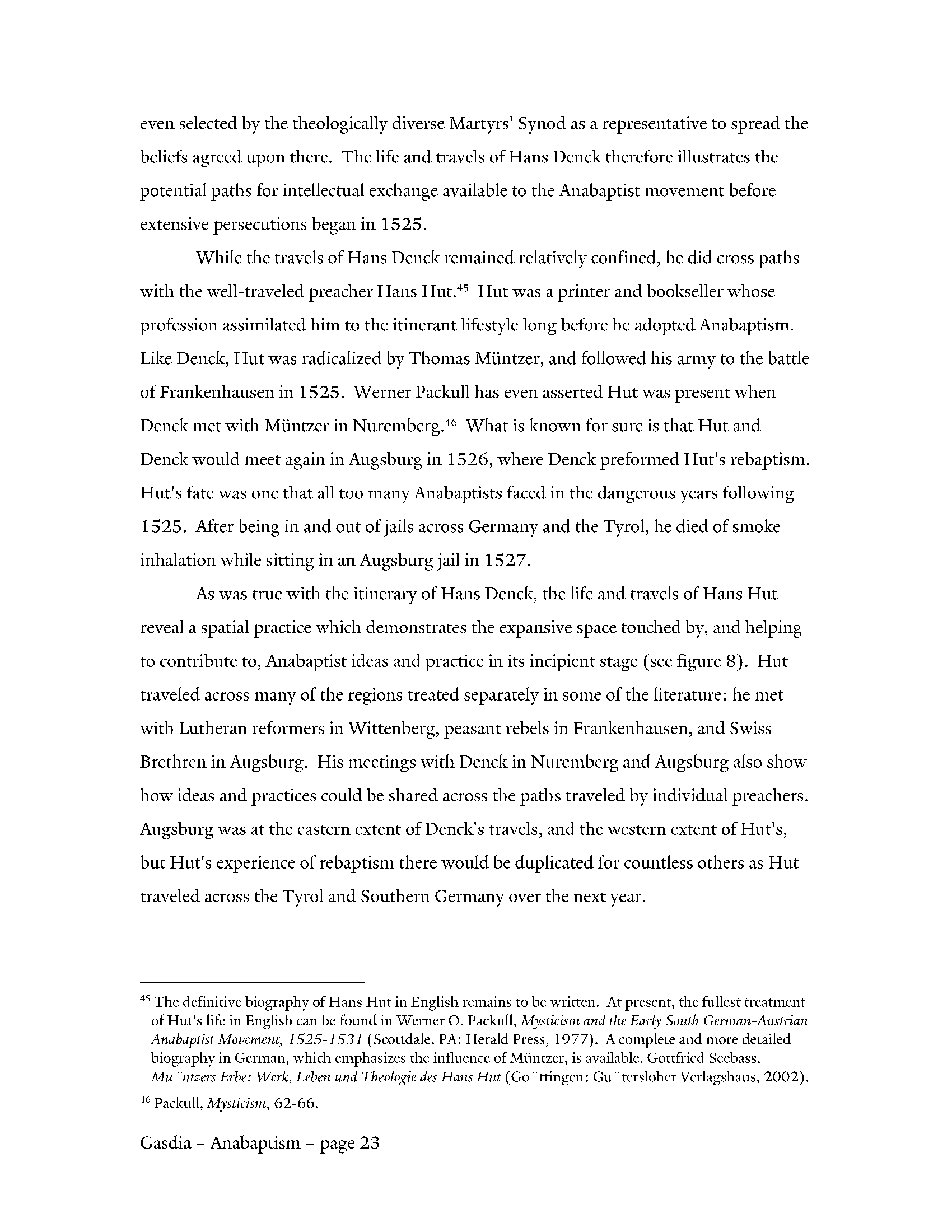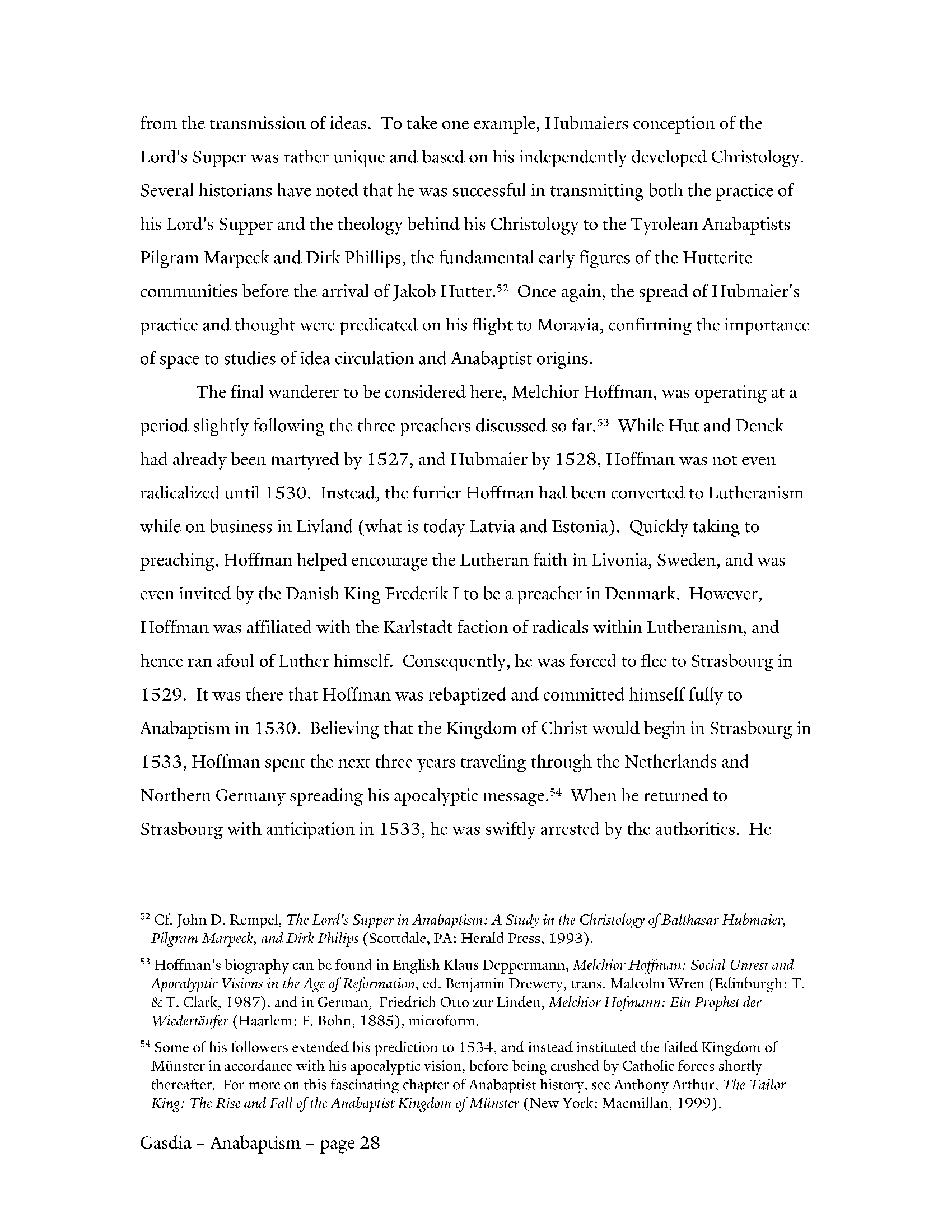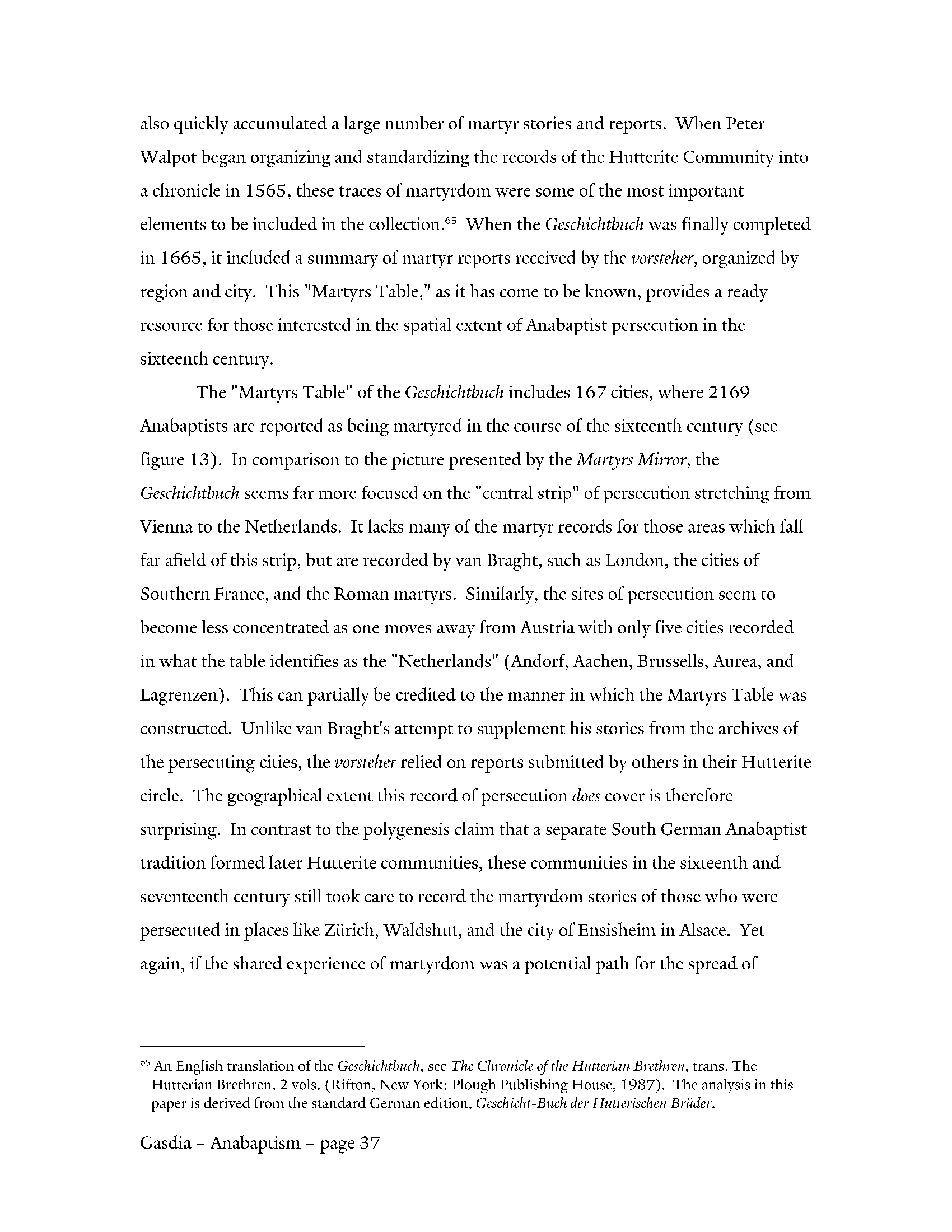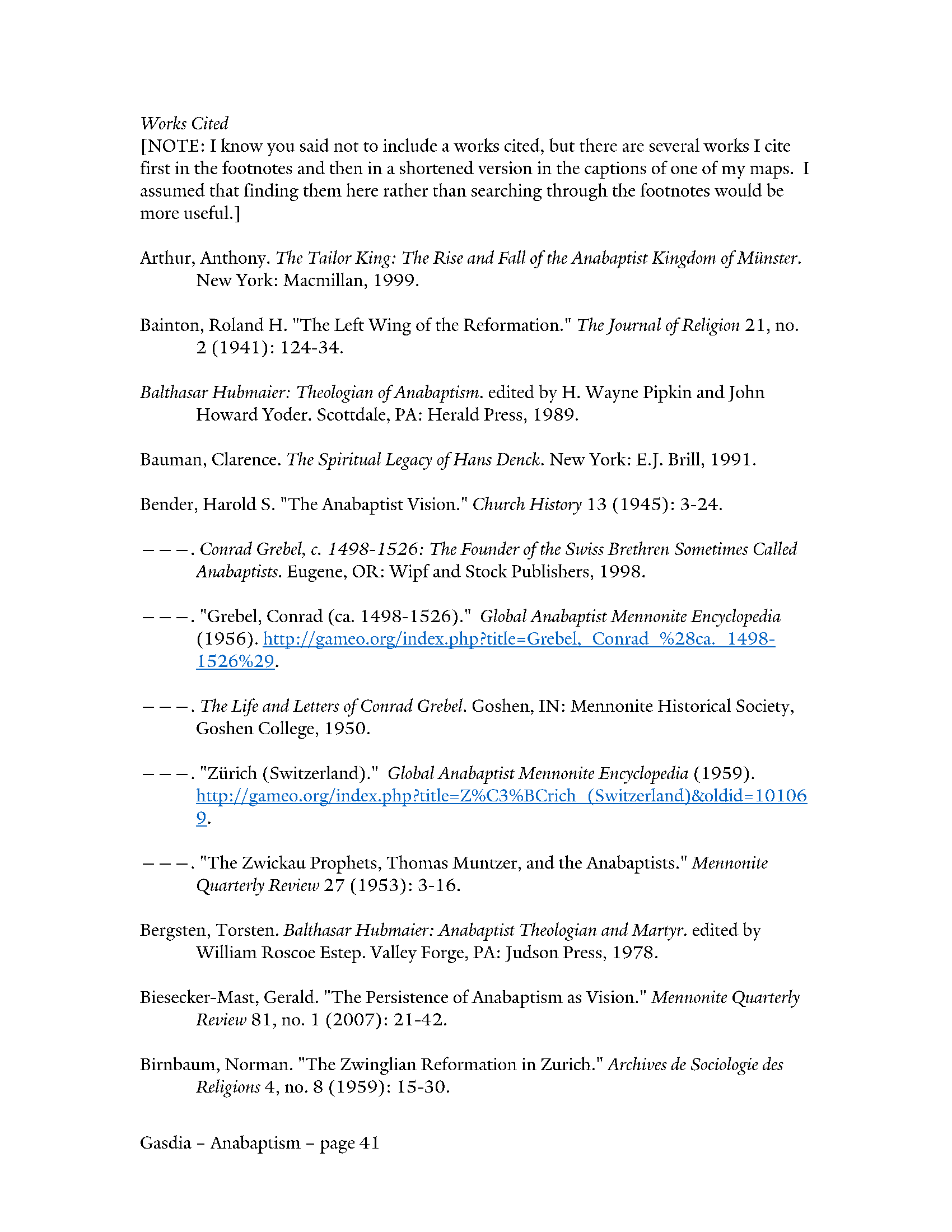Mapping the Radical Reformation:
The Transmission of Ideas and Spatial Practice
in the Early Anabaptist Movement
The Anabaptist movement of the sixteenth century has long captivated historians interested in the radical and popular elements of the Reformation. While the lives and thought of magisterial reformers like Martin Luther and John Calvin have been studied in detail, the theological predecessors of modern groups like the Mennonites and Hutterites have been largely neglected. This is in part due to deep-rooted and continuous debates in historical and theological communities over which historical figures should be included under the banner of "Anabaptist." Using the lenses of theology, sociology, culture, and even economics, historians have offered a number of competing definitions which hinder future research. This paper aims to reframe this debate by discarding, for the moment, the typical lenses of theology and ecclesiology usually employed in analyses of the movement. By instead placing the various people and groups identified by this discordant historiography into a spatial context, and examining the spatial practice through which the theological ideas and practices of Anabaptism arose and spread, a far more coherent view of Anabaptist origins emerges.

